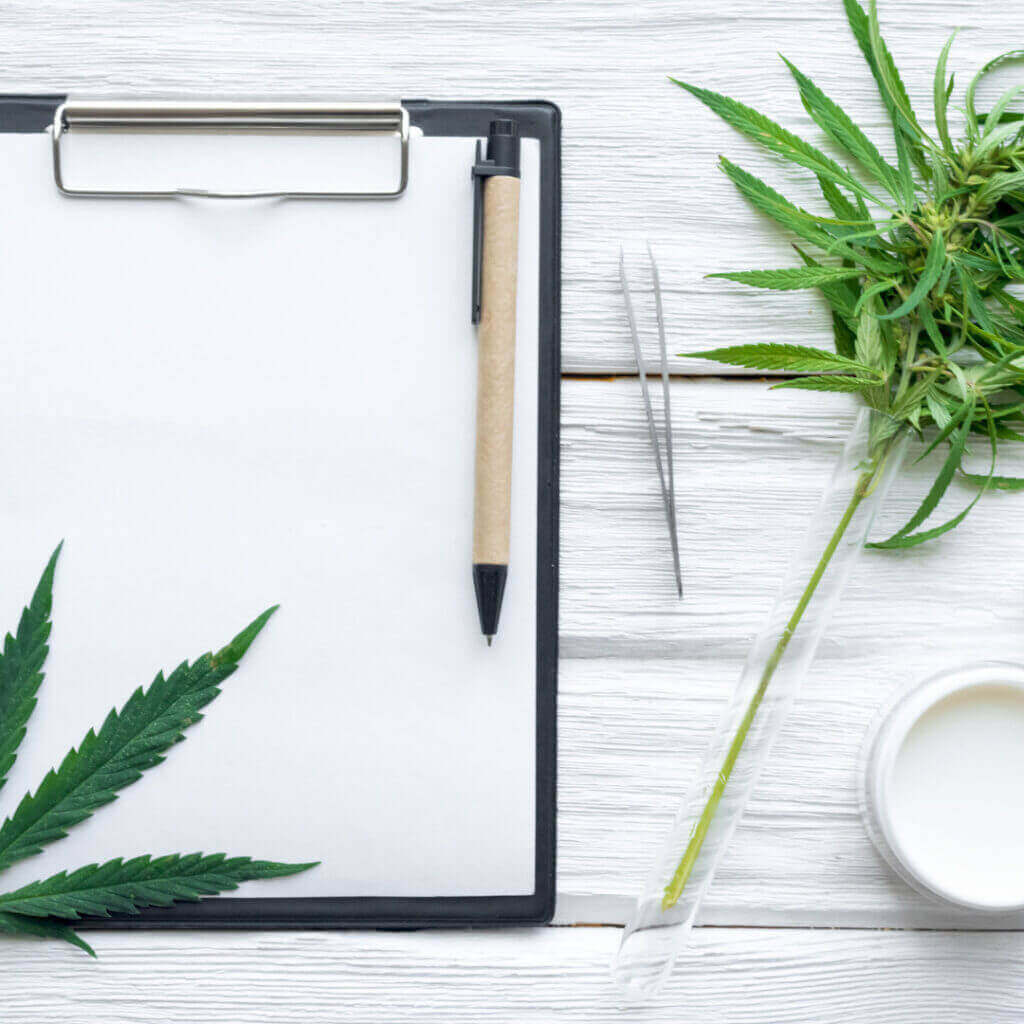
Cannabis prohibition and its effects can be seen globally. It wasn’t always like this, though. There was a time along the cannabis timeline when this plant shined. Somewhere along the way, something happened that changed humankind’s perception of this widely misunderstood plant. Things went wrong, and cannabis became illegal.
Today we live in a society where many places are still fighting to liberate cannabis from the evil clutches of power-hungry governments. Countless people across the United States and worldwide facilitate factual, accurate knowledge and information to the public.
Countless countries embraced cannabis at one point in time. Sadly, laws in many places today regarding cannabis do not reflect upon that point in time. There is a silver lining to the dark cloud of cannabis prohibition, and that is that it’s slowly coming to an end.
The information era has helped fuel the fire for cannabis legalization across the United States and in many other countries around the world. People are standing up and demanding change. The only obstacles that stand in the way of cannabis legalization are those of greed and power showed by elected representatives, dictators, and other forms of government and authority.
Why is cannabis illegal? Is it because the federal government says so or other governments around the world say so? What made them come to this conclusion? With all the knowledge we have today, why is cannabis still illegal? To better understand these questions as well as their answers, we’re going to take a stroll back in time as we begin our adventure down the cannabis timeline.

Rewind time just a little over 4,000 years ago to 2900 BC, and you’ll find that cannabis showed up in China. A Chinese culture hero and the first mythical emperor of China, Fu Hsi, sometimes called Fuxi, is said to have made one of the earliest known references to cannabis, calling it “Ma,” which is the Chinese translation for cannabis. History shows that Fu Hsi looked at cannabis as “a very popular medicine that possessed both yin and yang.”
Emperor Fu Hsi wasn’t just an emperor; many people accredit him, along with his sister and wife, for the creation of humanity. This trio also receives recognition for the introduction of hunting, fishing, cooking, music, writing, and domestication in China during this time.
Two hundred years later, another Chinese Emperor by the name, Shen Nung discovered the healing properties of cannabis. Shen Nung is considered the father of Chinese medicine by many. Some called Shen the Yan Emperor, which translates to “divine farmer.” Shen Nung is believed to have been responsible for bringing agriculture to China. Cannabis wasn’t only seen as a medicine; it was recognized for its strong fibers and nutritional value as well.

One thousand years after Shen Nung’s discovery of the healing properties of cannabis, we see this amazing plant referenced in writing for the first time. In 1500 BC, the first written reference of medical cannabis appears in the Rh-Ya. The works written in the Rh-Ya, are still being researched by professionals today.
“Cannabis sativa L. (Cannabaceae) has a long history of utilization as a fiber and seed crop in China, and its achenes (“seeds”) as well as other plant parts have been recorded in Chinese medical texts for nearly 2000 years. While the primary applications of cannabis in Chinese medicine center around the use of the achenes, ancient indications for the female inflorescence and other plant parts include conditions such as pain and mental illness that are the subject of current research into cannabinoids such as cannabidiol (CBD) and Δ9-tetrahydrocannabinol (THC).”–NCBI
1450 BC brings the next mention of cannabis in the book of Exodus, where it is referred to as “kaneh-bosem” and as part of the recipe for the making of holy anointing oil. If you find it hard to believe that cannabis made its way into the Bible, check and see for yourself in Exodus 30:22-23. Holy anointing oil was only reserved for the highest of priests. It was forbidden for common people to receive its benefits. That was until Jesus showed up going against the word of his father and began anointing his flock with holy anointing oil. The name Jesus or the Messiah translates to mean “the anointed.”
1213 BC marked the death of Egyptian pharaoh Rameses II. His mummy was discovered in 1881, and since then, research has found cannabis pollen on it. The Egyptians were an extremely advanced civilization known for their major engineering feats and cities of gold and gems set amongst the desert. Their knowledge of agriculture was astonishing. During this time in Egypt, cannabis was widely prescribed as a treatment for cooling the uterus, inflammation, and more.
Scooting on along the cannabis timeline to 1000 BC, we find cannabis appears in India. It is combined with milk to make a drink in India known as bhang. According to history, India utilizes cannabis to treat a wide array of human ailments.
In 700 BC, an ancient Persian religious text, the Venidad shows us the first recorded medical use of cannabis by those in the Middle East. This text list cannabis as “the most important of 10,000 medicinal plants.” This can be seen today evidently in the effectiveness of how cannabis works to help control or even eliminate the symptoms of a plethora of today’s medical conditions.
In 200 BC, we see the use of medical cannabis in ancient Greece. During this time, cannabis was used to help treat inflammation, earaches, and more. The use of cannabis as a medicine doesn’t stop here.

1 AD, Chinese text lists cannabis as a treatment for over a hundred different ailments. This list was put together based on translations from the works of the father of Chinese medicine, Shen Nung.
70 AD, we see cannabis show up in Roman medical text called “De Materia Medica,” where Greek physician Pedanius Dioscorides describes the juice of a plant used to make rope, help suppress sexual longing, and to treat earaches.
Nine years later, in 79 AD, a Roman nobleman Pliny the Elder, wrote about cannabis in a book, saying that the plant’s roots, when boiled, could help ease violent pain, gout, and cramped joints.
One hundred twenty-one years later, in the year 200, cannabis resin was combined with wine to be used as an anesthetic by a Chinese surgeon named Hua T’o. The anesthetic was called ma-yo and was said to make procedures such as thoracotomies and laparotomies painless.
Somewhere between 800 and 900 ad, an Arab physician named Ibn Wahshiyah apparently got a hold of some really strong hashish warning the potential effects of it to be a lethal poison. Meanwhile, at the same time, cannabis was widely prescribed by the Islamic physician, Rhazes.
This was pretty much the very first negative mention of cannabis. I would like to also point out that it was the opinion of one human. From here, we start to see a change.
In 1500, Persian theories on cannabis were utilized by Muslim doctors. Muslim doctors often prescribed cannabis to reduce sexual cravings.
In 1538, the first English botanist William Turner praised cannabis. It was considered an essential part of any early herbalist medicine cabinet during the Middle Ages.
Going back to China, in 1578, Chinese medical text describes cannabis as a treatment for vomiting, hemorrhage, and parasitic infections. Even though cannabis remains against the law in China today, many people still secretly utilize its medicinal properties.

In 1600 famous poet William Shakespeare is said to have enjoyed smoking a bowl. This was determined from one of Shakespeare’s pipes, many of which were dug up in his garden. Tests on these pipes indicated samples of nicotine, cannabis, and Peruvian cocaine. Apparently, sparking one of these bowls helped to spark his creativity.
In 1621, Robert Burton, an Oxford scholar and English clergyman, suggested cannabis for treating depression. Imagine that hundreds of years ago, people knew what some people are just beginning to realize today.
Between 1745 and 1775, George Washington cultivated a form of cannabis known as hemp. His agricultural ledgers showed that Mr. Washington had a vested interest in the potential of medical cannabis. Not only did these diaries show an interest in the medical properties of the plant, but they also showed that Mr. Washington was cultivating strains of cannabis with high THC.
George Washington wasn’t the only founding father of America to embrace cannabis; Thomas Jefferson also did so by growing hemp at Monticello.
In 1799 Napoleon invaded Egypt and returned to France, bringing back cannabis with him. The French began studying the pain-relieving potentials of cannabis as well as its sedative effects.
In 1840 medical cannabis made its way into the UK. Dr. William O’Shaughnessy was a British army surgeon who served in India. During this time, cannabis was widely used to treat conditions such as rabies, convulsions, muscle spasms, menstrual cramps, and more. Dr. O’Shaughnessy is reported to have introduced cannabis to Queen Victoria to help her with menstrual pains. Unlike Shakespeare, who liked to smoke, Dr. William O’Shaughnessy administered cannabis in the form of a tincture. Dr. Jacquees-Joseph Moreau of the same time. Said that cannabis “suppressed headaches, increased appetites, and aided people to sleep.” Apparently, people had a hard time sleeping even back in 1840.

In 1850 the United States of America added cannabis to the US pharmacopeia, a monumental moment on the cannabis timeline. The pharmacopeia listed cannabis as a treatment for a wide variety of conditions like tetanus, excessive menstrual bleeding, leprosy, rabies, dysentery, tonsillitis, and more. When I say more, get ready for this. In 1850 our medical community already knew that cannabis was a successful treatment for opiate addiction and alcoholism. In 1889, one of the world’s leading medical journals, The Lancet, outlined the use of cannabis for opium withdrawal.
During 1893 and 1894, the Indian hemp commission referenced multiple uses of medical cannabis. This commission was established over concerns about cannabis being used as an intoxicant in India. Too bad they didn’t just leave cannabis alone. If they had, perhaps so many people wouldn’t be dying today from poisoned illegal alcohol being sold in the back alleys of India.

Massachusetts was the first state in America to outlaw cannabis, followed by Indiana, Maine, and Wyoming in 1913, New York in 1914, then followed Vermont and Utah in 1915. Even though these places decided to outlaw cannabis, United States pharmaceutical farms were still cultivating around 60,000 pounds of cannabis in 1918.
By 1925 the first signs of marijuana prohibition were officially seen when the League of Nations signed a multilateral treaty restricting cannabis use to scientific and medical use only. Suddenly cannabis had a bad rep.
In 1928 it was added to the dangerous drugs act in the UK. In 1930 the United States would appoint Harry J. Anslinger as commissioner of the Federal Bureau of Narcotics. This would lead to an all-out war on cannabis. During the 1930s, cannabis was considered the target of government control. This is where dirty politicians come into play, being lobbied by industries such as paper, lumber, and cotton.
Just before what many consider to be the official start of marijuana prohibition in 1937, the United States federal government launched a film called Reefer Madness which was an anti-cannabis propaganda film that would inevitably backfire, just like the War on Drugs did. Today Reefer Madness is seen as a mockumentary.
The Marijuana Tax Act of 1937 pretty much made it where nobody could work with cannabis. The tax was extremely high, and regulations for working with cannabis were extremely strict. On October 2nd of, 1937, the first person was officially convicted under US federal law for selling marijuana. A 58-year-old Samuel R Caldwell, along with a 26-year-old laborer named Moses Baca, reserved their place in history as being the first marijuana seller and buyer to be convicted under US federal law.
In 1942 cannabis was removed from the US Pharmacopeia. In 1944 then, Mayor LaGuardia of New York concluded that cannabis was less dangerous than commonly thought. This statement came to be based on the research conducted by medical professionals at the New York Academy of Medicine.
Apparently, the federal government figured these professionals didn’t know what they were talking about as they continued with marijuana prohibition in full swing. In 1956 the Narcotics Control Act led to stricter penalties for anyone in possession of cannabis. Back then, the fine could be up to $20,000 along with between a two to 10-year sentence in prison.

In 1964 Dr. Raphael Mechoulam, who is professor of medicinal chemistry at the Hebrew University of Jerusalem, received credit as the first to identify and synthesize Delta-9-tetrahydrocannabinol or THC, which is considered the main psychoactive compound in cannabis. Dr. Mechoulam may have received the credit for this discovery, but he was going on the works of someone before him. A man named Roger Adams was the first to discover CBD and to identify THC back in 1940.
In 1968 the University of Mississippi became the official grower of cannabis for the federal government. If the quality of cannabis grown by the University of Mississippi is a testament to how cannabis is grown in the state, let’s hope they start cannabis imports soon because the product that came from the University of Mississippi is notorious for being substandard. Cannabis grown at the University of Mississippi sent out for research has had mold, bugs, and many other things wrong with it.

After hundreds of years of cannabis being a medicine in 1970, the United States of America decided to classify cannabis as a drug with no accepted medical use. By 1971 cannabis was listed as a schedule 1 drug under the Controlled Substances Act. As a schedule 1 drug, cannabis was “classified as having a high potential for abuse, no currently accepted medical use in treatment in the United States, and a lack of accepted safety for use of the drug or other substance under medical supervision.”
Seeing the atrocity that was happening to cannabis, the cannabis community brought forth the formation of the National Organization for the Reform of Marijuana Laws, known as NORML, in 1970.
In the 1940s, Mayor LaGuardia of New York commissioned a report on cannabis by the New York Academy of medicine. This report contradicted the propaganda of the federal government. The federal government decided to try it again when Nixon commissioned former Pennsylvania Governor Raymond Shaffer to conduct a report on cannabis. During a time when cannabis was being portrayed as the devil’s lettuce, and the US federal government wanted to eradicate it from the planet, the Schaefer Commission recommended the decriminalization of cannabis in 1972.
Nixon was bent about the Shafer Commission marijuana reports. Despite the advice to decriminalize cannabis, Nixon continued its prohibition taking it another step further, declaring the War on Drugs in 1971.
In 1973, the Drug Enforcement Agency (DEA) was established by merging the Office of Drug Abuse Law Enforcement with the Bureau of Narcotics and Dangerous Drugs. Cannabis prohibition and the War on Drugs, and the attempted eradication of cannabis was in full swing. The American federal government was going after people at every turn for cannabis. Other places around the world seemed to follow suit adopting similar laws or, at times, even harsher ones. Not everybody agreed with America’s viewpoint on cannabis.

In 1976 the Netherlands adopted the decriminalization of cannabis. They didn’t necessarily legalize it as it was still a crime to possess cannabis under Dutch law; however, the Ministry of Justice just did not enforce it. By 1980 coffee shops could be found in the Netherlands where cannabis could be purchased.
With cannabis prohibition in full swing in 1976, a groundbreaking victory for cannabis supporters, advocates, patients, and consumers was one by Robert Randall. Robert defended himself against cultivation charges in a federal case where Judge James Washington ruled in favor of Robert Randall. Robert claimed his cannabis cultivation was out of medical necessity for a condition he had called glaucoma. Robert Randall went down in history as the first American to get cannabis from the federal government for the treatment of a medical disorder. This led to others receiving Federal cannabis in 1978, all of which was cultivated at the University of Mississippi.
Even though cannabis was removed from the US pharmacopeia in the 1940s and the United States federal government said that cannabis had no medical value, in 1978, New Mexico passed the first state law that recognized the medical value of cannabis.
In 1985 the FDA approved Marinol for the treatment of nausea, a first on the cannabis timeline. After claiming cannabis had no medical value, it was unexpected that the FDA would give this approval. Even more unexpected was the green light given by the DEA a year later.
In 1988, Judge Francis Young recommended that cannabis should be rescheduled to a schedule ll drug. This showed it had medicinal value and would have opened doors for legalization and research on a broader scale much sooner. Sadly though, in 1989, the DEA administrator decided Francis Young was wrong and ordered cannabis to remain a scheduled one substance.
In 1990, researchers at the National Institute of Mental Health discovered cannabinoid receptors. These receptors would later go on to include CB1, CB2, THRV receptors, and more. In 1991 the War on Drugs was in full swing, and the government program giving cannabis to those who were seriously ill was brought to a halt. It seems like the United States government just couldn’t decide if cannabis was good or cannabis was bad. I guess it was all about who had the most money to lobby politicians at the time.
In 1991 a survey conducted on members of the American Society of Clinical Oncology showed that 53% of oncologists who were surveyed said cannabis should be available by prescription. After the discovery of cannabinoid receptors by the National Institute of Mental Health in 1990, the first endocannabinoid was discovered in 1992. This new endocannabinoid called anandamide, aka the Bliss molecule, was referred to as the brain’s natural version of THC. In 1993 the American Medical Student Association supported cannabis rescheduling. They even called on the president of the time, Bill Clinton, to restart the Compassionate IND program.
In 1994 a decade-long court battle that began over a decision to schedule cannabis as a schedule 1 drug in 1972 finally came to an end. After all this time and countless taxpayer dollars, the US federal government kept cannabis a schedule 1 drug. In 1996 California became the very first state with access to a legal, medical cannabis program thanks to Proposition 215.
In 1997 showing the true genius and how easily bought and paid for they are, the NIH made the famous statement that many delusional politicians today fall back on, citing that “more study is needed to assess the potential of medical marijuana.” Still, today when many politicians are questioned about their lack of support of cannabis, they look at media and say that they believe more research is needed. Thanks a lot for that NIH!
In 1998 the UK House of Lords Committee made the recommendation of legalizing medical marijuana. In 2003 after almost a decade of saying cannabis has no medical value, the US government received a cannabinoid patent. They had torn apart families, arrested people, destroyed countless lives, and allowed American citizens to suffer rather than have cannabis, citing that it was a dangerous drug with no medicinal value and a high potential for addiction. Suddenly they file for a patent, and it’s for the therapeutic use of cannabinoids as antioxidants and neuroprotectants. Cannabis is amazing stuff, and it has incredible neuroprotectant and antioxidant properties. The federal government was simply capitalizing on what people already knew.

Between 2003 and 2012, cannabis was on a roller coaster ride where it was almost reduced in scheduling but then not. People fought for cannabis and their right to medical cannabis. Many states adopted medical cannabis laws going against the will of the federal government.
By the turn of the decade, many states had already adopted medical cannabis laws, legalizing state-level markets for patients, all with their own unique set of regulations and qualifying conditions. But none had recreational laws. That was until December of 2012 when voters in Colorado passed Amendment 64 legalizing adult-use cannabis. This made Colorado the first state to legalize the possession, cultivation, consumption, and purchasing of cannabis by adults over the age of 21 legal with limitations to how much could be purchased, possessed, and cultivated.
On August 8th of 2013, the American neurosurgeon Dr. Sanjay Gupta came out in support of cannabis, telling the world the following and literally changing the course of history for cannabis prohibition.
“I mistakenly believed the Drug Enforcement Agency listed marijuana as a schedule 1 substance because of sound scientific proof. Surely, they must have quality reasoning as to why marijuana is in the category of the most dangerous drugs that have no accepted medicinal use and a high potential for abuse. They didn’t have the science to support that claim and I now know that when it comes to marijuana neither of those things are true it doesn’t have a high potential for abuse, and there are very legitimate medical applications.”
2014 was an epic year for the cannabis timeline as it was the first year where legal sales began in Colorado. Adults 21 and older with valid state identification could purchase cannabis. Since then, many states have adopted laws that allow for medical or recreational cannabis dispensaries. Some states have very questionable cannabis laws where no smokeable forms of cannabis are allowed, only low dose tinctures are allowed, etc.
Today in 2022, the majority of America has some form of medical cannabis law in place. Eighteen states have legalized recreational cannabis, and 37 states have legalized medical cannabis. We are still fighting to teach the elected representatives of the United States of America the facts about cannabis. Cannabis should be legal. It should be removed from its current schedule. Keeping cannabis confined to a state by state area greatly impacts many different factors such as gray areas when it comes to law enforcement, court cases regarding government seizures of cash and forfeits of assets, not to mention the concerning issue of not allowing businesses to bank but requiring them to pay federal taxes in cash. The list of issues this grey area produces is substantial, but times are changing, and the culture and community surrounding this plant have shown that they will not stand down until everyone has legal access to this miraculous plant.
Hopefully, 2022 will be the year for something new regarding the federal legality of cannabis in the United States. After all, how much longer can the elected representatives of our country cling to misinformation? Perhaps a little Potency 710’s Filthy Face could help clear up the complexion of many of our politicians, allowing them to see the truth under the mask of lies they’ve been wearing for so long.